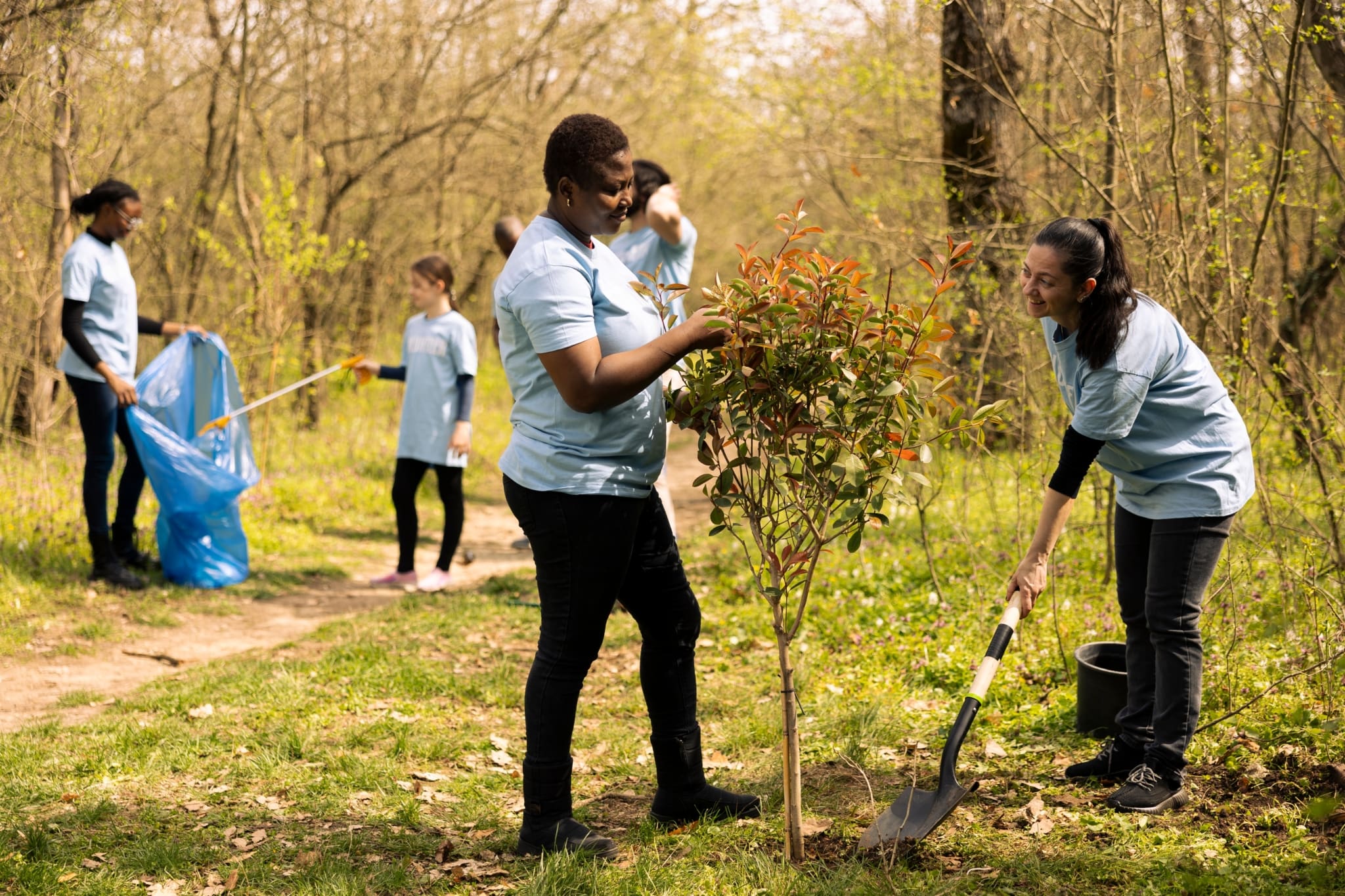This guest blog was written by Andi Williams, Director of the Population Health sector portfolio at the Center for Creative Leadership (CCL), and Pete Ronayne, Senior Faculty member at CCL. CCL, a member of Independent Sector, sponsored the 2022 Upswell Summit, which was held on November 15. At the Summit, Williams led a session titled “Break Up with Burnout: Fostering Organizational Resilience.”

Andi Williams
The concept of “quiet quitting” has struck a chord in our country from employees whose attitudes towards what is important continue to evolve, to managers who worry about balancing important polarities of accountability and support, to organizations that struggle to respond to the changing nature of work. Nonprofit organizations may be affected to a greater extent given both the demands on our workforce (we are always doing more with less) and the fact that this trend often impacts high performing, passionate employees who are reevaluating their relationship with work. Sound familiar?
Stories have flooded social media and news outlets, from NPR and the Wall Street Journal to CNN and Chief Learning Officer. The conversation began on TikTok, with a video uploaded by Zaid Khan who narrates a 17-second video, during which he explains:
“I recently learned about this term called quiet quitting, where you’re not outright quitting your job, but you’re quitting the idea of going above and beyond,” Khan says. “You’re still performing your duties, but you’re no longer subscribing to the hustle culture mentality that work has to be your life. The reality is it’s not — and your worth as a person is not defined by your labor.”

Pete Ronayne
From there, discussion, debate and critiques have ensued, many mistaking the core concept for a tale of disengaged or unmotivated workers. Let’s disentangle the term quiet quitting from its misinterpretations.
The core thinking and behavior behind quiet quitting isn’t about underperformance or refusing to go above and beyond during a crisis or other busy times. It’s about recognizing that crisis level work should not be the norm and is not sustainable. Ignoring this hurts both the individual and the organization. It’s also about recognizing that the burden shouldn’t be on the individual. The systems that we live and work in create conditions that prompt predictable results, with quiet quitting clearly showing that the system is not producing optimal conditions for anyone, including employers.
For example, while many organizations have not examined how to calibrate employee workloads, post pandemic, many workers have actively reassessed their expectations about work. Leaders need to pay attention to this gap and understand how employees might be experiencing this tension.
Quiet quitting isn’t a “slacker manifesto” but a response to deep reflections about how and where we mindlessly let work encroach further and further into our lives.
Instead, quiet quitting is about changing assumptions and previously unexamined behaviors and conditions – many of which lead to burnout.
What if we reexamine some other assumptions and reactive behaviors and replace those behaviors with something that better enhances our well-being and helps us, our teams, and even our communities to burn bright instead of burning out? Here are some tips based on our research.
Quit being quiet about boundaries. Boundaries are more important than ever as we navigate new ways of working – especially as virtual/hybrid work continues to expand. Healthy work boundaries are essential to long term employee health and wellbeing.
Be diligent and courageous about exploring your work boundaries, clearly share them with your team, and boldly ask your coworkers how you can help support their healthy work boundaries. Leaders can role model these behaviors for their teams. Seeing a leader in your organization effectively navigate these boundaries is powerful.
Quit having days without any quiet. The noise of our technology and information saturated world can be extra draining. We can be surrounded by sound and background noise almost 24/7 if we aren’t careful. Silence and solitude help recharge our attention and emotional regulation, lower anxiety and enhance creativity.
So quietly quit the endless noise and take just 2 minutes after reading this to find a quiet place and close your eyes. Or grab your noise cancelling headphones and try some gentle ambient music or brown noise. If your location allows, take even 6 minutes to walk solo in a natural quiet park like setting. Organizations can encourage this behavior by making time between meetings an expectation.
Quit holding meetings for longer than 60 minutes or without time to recharge. Sure, the meeting topic and to do list might require more than 60 minutes but plowing ahead for more than an hour without a break means diminished attention, inattentive listening, and wandering minds. This is especially true for virtual engagements.
So quietly quit it – and encourage everyone to give their brain a break. Just 5 minutes without email, any screen, or even any thoughts. Do something like step outside and look at the scenery, pet your dog, or just quietly sit. Try this at your next meeting. Make this an organization-wide expectation!
Quit trading sleep for work. Researchers at the University of Pennsylvania Perelman School of Medicine reviewed detailed time-use studies and uncovered that people who said they slept 6 hours or less at night worked 1.5 hours more than others who got more sleep.
“The evidence that time spent working was the most prominent sleep thief was overwhelming,” lead study author Mathias Basner said. “It was evident across all sociodemographic strata and no matter how we approached the question.”
Sleep-deprivation is also a productivity and performance killer – and invites us onto a path away from our best selves and instead on the high-speed lane to burnout.
What if we quit sacrificing sleep to take care of one more thing on the work to do list – instead, building a foundation for our best selves to show up more often for the communities we serve?
Quit checking your email before even getting out of bed: Would you invite several dozen colleagues into your bedroom at the start of day to pepper you with questions and needs? No? Well, that’s basically what you do when you open that email before your feet even hit the floor. In general, our email inbox hijacks our emotions and not in a positive way.
So quietly quit it – and try waiting even just 10 minutes before peeking. Organizations can support employees in doing this by encouraging out of office messages when offline, email signatures that set expectations and boundaries on working hours and modeling these behaviors for employees.
Leaders who quit some of these draining habits can then respond to the broader quiet quitting phenomenon in a compassionate way and create greater overall resilience for their organization. Seeing quiet quitting as a response to an unjust or unsustainable system and not as an individual failure is one place to start. Nonprofit leaders traditionally have compassion as a strong competency. Directing compassion toward the workforce is an opportunity and an advantage for nonprofit leaders.
At the 2022 Upswell Summit, Andi Williams of the Center for Creative Leadership led a session titled “Break Up with Burnout: Fostering Organizational Resilience.” She shared research-based resilience building tips on how you can focus not only on the needs of individuals but also on creating the conditions for everyone to bring their best selves to work and fostering an environment that supports our people and the communities we seek to serve.
As director of CCL’s Population Health sector portfolio, Andi Williams designs and delivers transformational leadership development experiences to leaders at every level, with particular focus on health leaders. Pete Ronayne is a Senior Faculty member at CCL. He works with organizations of every size and shape and sector to help leaders bring their best, peak-performing selves to all aspects of their lives – in other words, Burning Bright instead of burning out.



